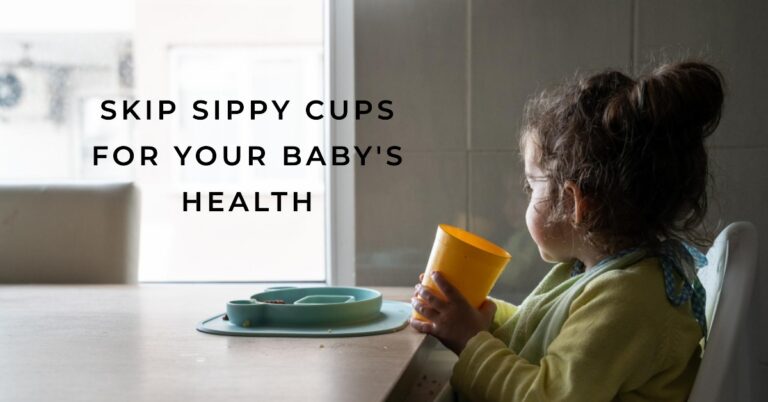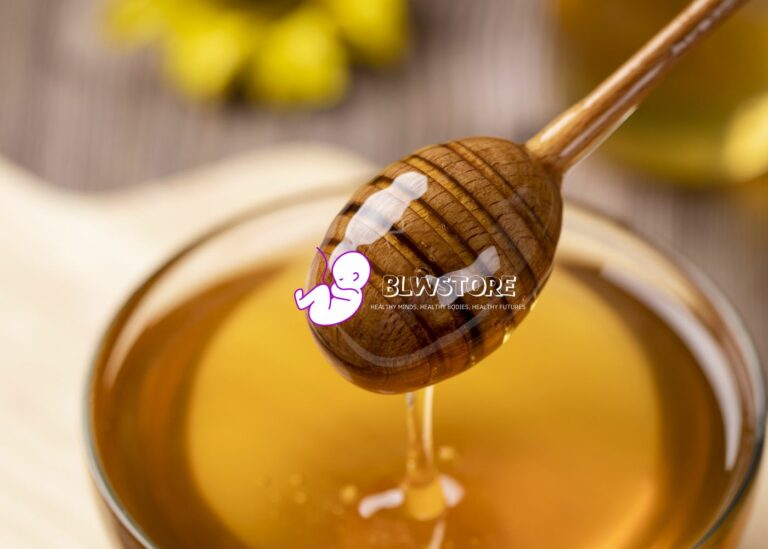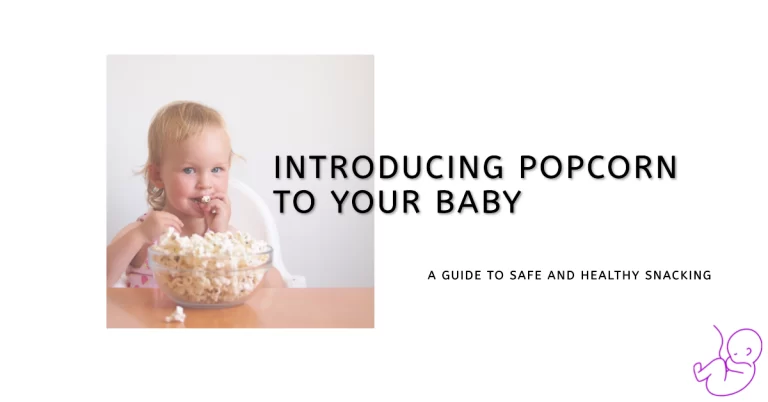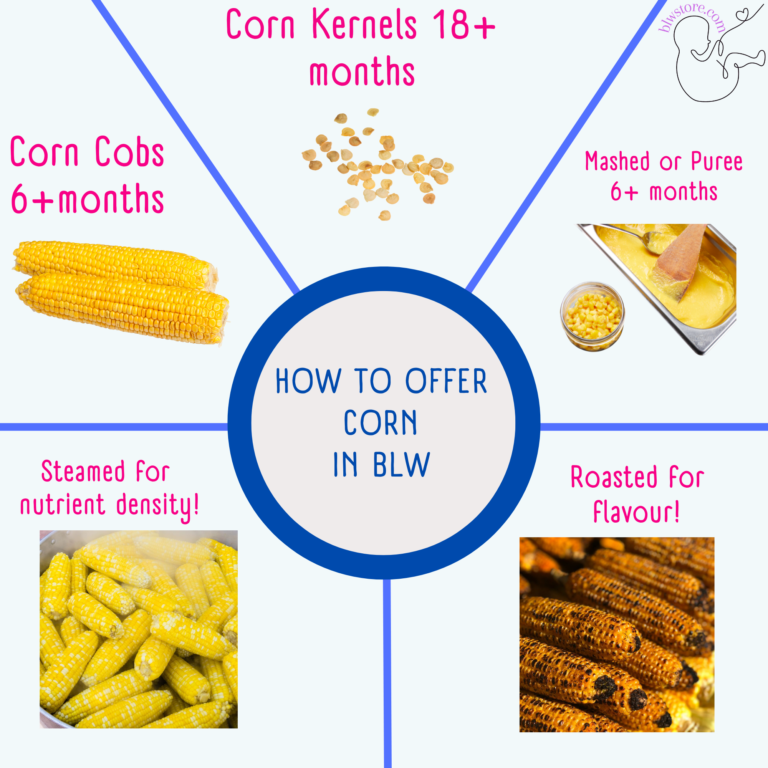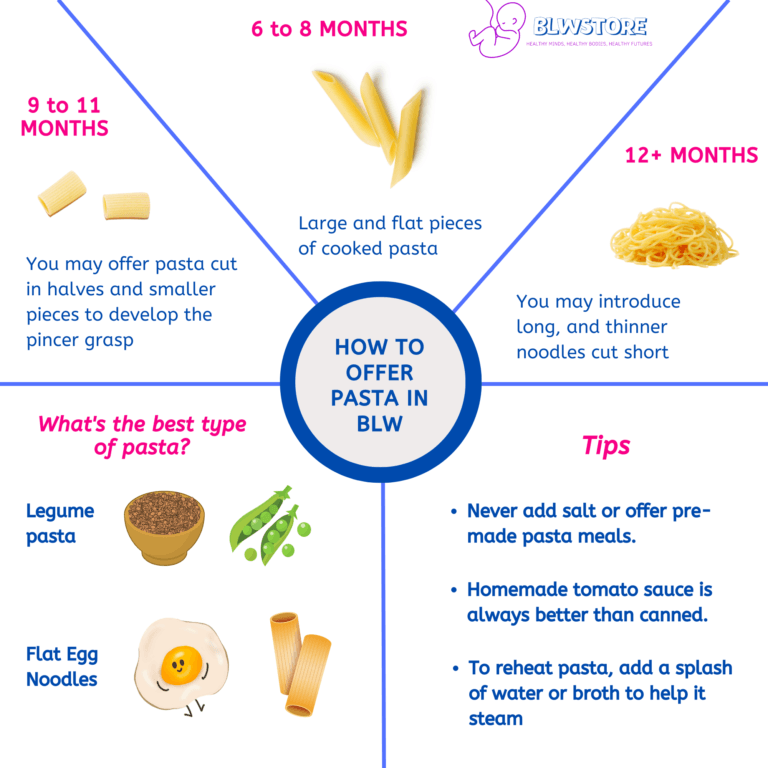
Do you want to know how to introduce kiwi to your baby as you begin baby-led weaning?
The fruit kiwi is delicious and healthy, making it a fantastic addition to your baby’s diet.
Understanding how to serve it securely is crucial so your child will love it.
Everything you need to know about introducing kiwi to your baby—including when to start, how to prepare it, potential allergens, and choking hazards—will be covered in this guide.
Let’s get after it!
Key Takeaways
- Kiwis can be introduced to babies as early as six months of age when they start eating solid foods.
- Kiwis are rich in nutrients, such as vitamin C, fiber, potassium, and vitamin K, providing multiple health benefits for infants.
- Both green and golden kiwis are suitable for babies, offering a variety of tastes and textures.
- Serve kiwi according to the baby’s age: whole or mashed for 6-9 months, chopped for 9-12 months, and bite-sized pieces for 12+ months.
- Ripe and soft kiwis reduce the risk of choking, but always supervise your baby while eating.
- Kiwi allergies are uncommon, but introduce the fruit in small amounts and watch for any adverse reactions.
- Kiwis are easy to digest and support healthy digestion and bowel movements, but introduce gradually to minimize gas production.
- Kiwi can be incorporated into various recipes, such as pancakes, purees, and oatmeal.
- Store kiwis properly to maintain freshness: at room temperature to ripen, in the refrigerator for up to a week once ripe, and in airtight containers or freezer bags for peeled and cut kiwis.
- Organic kiwis can reduce exposure to pesticides, but may be more expensive.
- Kiwi skin is edible and nutritious but may be too tough for some babies. Ensure the fruit is thoroughly washed if serving with skin on.
When can you introduce kiwis to your baby?
You can offer kiwis to your baby as early as six months of age, which is when they are usually ready to start eating solid foods.
What are the benefits of kiwis for babies?
Kiwis are loaded with nutrients that can have multiple health benefits for your infant.
They are an excellent source of vitamin C, which aids in immune system support and iron absorption.
Moreover, kiwis include fiber, which regulates digestion and promotes intestinal health.
In addition, they are low in sugar and calories, making them a nutritious option for infant snacks.
| Nutrient | Amount per 100g |
|---|---|
| Calories | 61 |
| Protein | 1.1g |
| Fat | 0.5g |
| Carbohydrates | 14.7g |
| Fiber | 3g |
| Vitamin C | 92.7mg |
| Vitamin K | 40.3mcg |
| Potassium | 312mg |
| Folate | 25mcg |
| Calcium | 34mg |
Green or golden kiwi?
When choosing kiwis for your baby, you can opt for either green or golden varieties. Green kiwis have a tangy and slightly sweet taste, while golden kiwis are sweeter and have a tropical flavor.
Both types are packed with nutrients that can benefit your baby’s health, so the decision ultimately comes down to personal preference.
It’s a good idea to offer both types of kiwis to your baby to expose them to a variety of tastes and textures.
How to serve Kiwi to baby
6 to 9 months
For babies aged 6 to 9 months, try serving peeled or unpeeled ripe whole kiwis, or even a ripe kiwi half.
Make sure the kiwi is ripe and soft so that it’s easy for them to munch on. You can also mash the kiwi and mix it with other fruits or oatmeal.
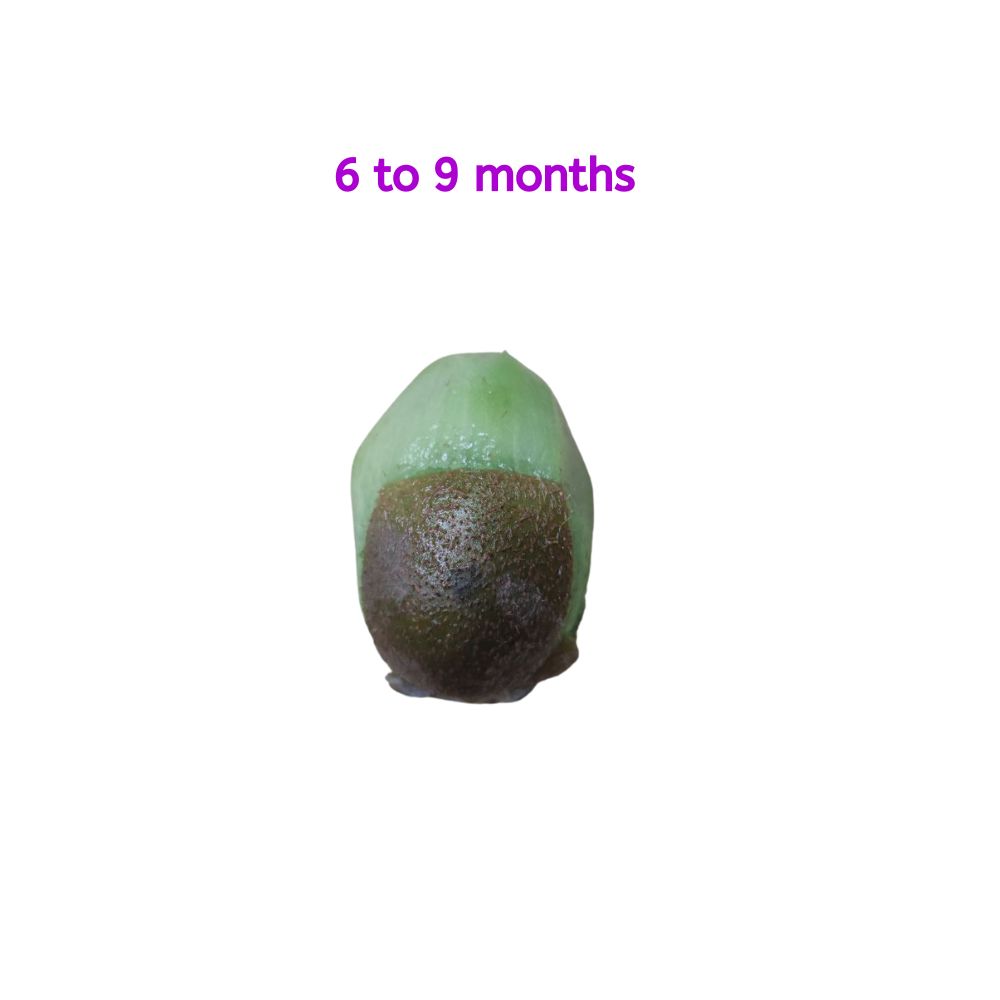
9 to 12 months
For babies aged 9 to 12 months, chopped kiwi, with skin on or off, is a great option.
Just make sure the pieces are large enough so that your baby doesn’t choke on them.
If the pieces are too slippery, try rolling them in finely ground food like coconut flakes or breadcrumbs.
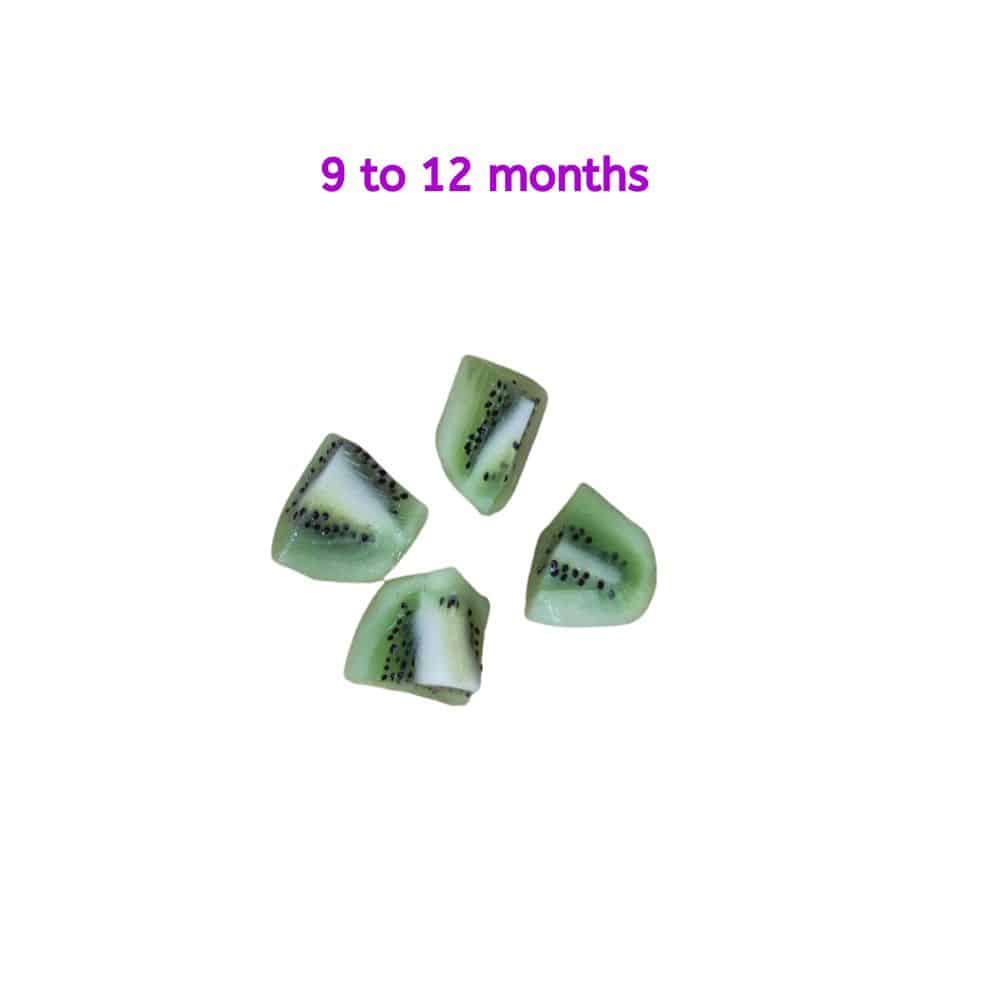
12+ months
For babies aged 12 to 24 months, offer bite-sized pieces of ripe, peeled, or unpeeled kiwi as finger food or serve it with a fork to encourage utensil practice.
At this age, their pincer grasp has more fully developed, so the pieces can be a bit smaller.
Kiwi can also be added as a sweet topping to foods like oatmeal, quinoa, rice, and yogurt.
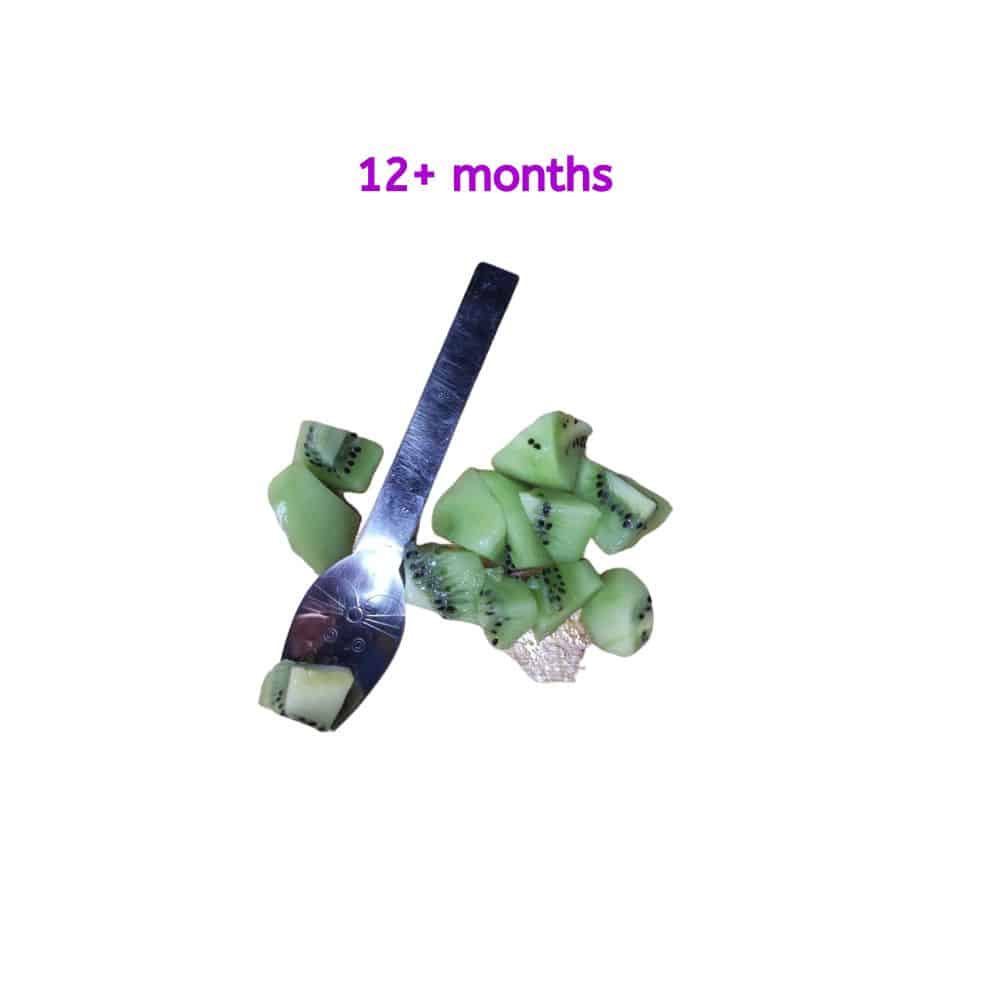
Are kiwis a common choking hazard for babies?
Kiwi can be a choking hazard for babies due to its slippery and firm flesh. However, the risk of choking is relatively low if you serve ripe and soft kiwis and cut them appropriately according to your baby’s age.
Make sure the kiwi is sweetly fragrant and gives slightly when pressed. Avoid serving kiwis that are too hard, as your baby won’t be able to chew them and may swallow them whole, increasing the risk of choking.
As with any food, always supervise your baby when eating and be prepared to act quickly.
Are kiwis a common allergen for babies?
No, allergies to kiwis are uncommon, though individuals with oral allergy syndrome (a sensitivity to pollen-related foods) may be sensitive to this fruit.
Additionally, individuals with latex allergies may develop a cross-allergy to kiwis. As with any new food, start by offering small amounts and gradually increasing the quantity over future meals if there are no adverse reactions.
Are kiwis gassy or hard to digest for babies?
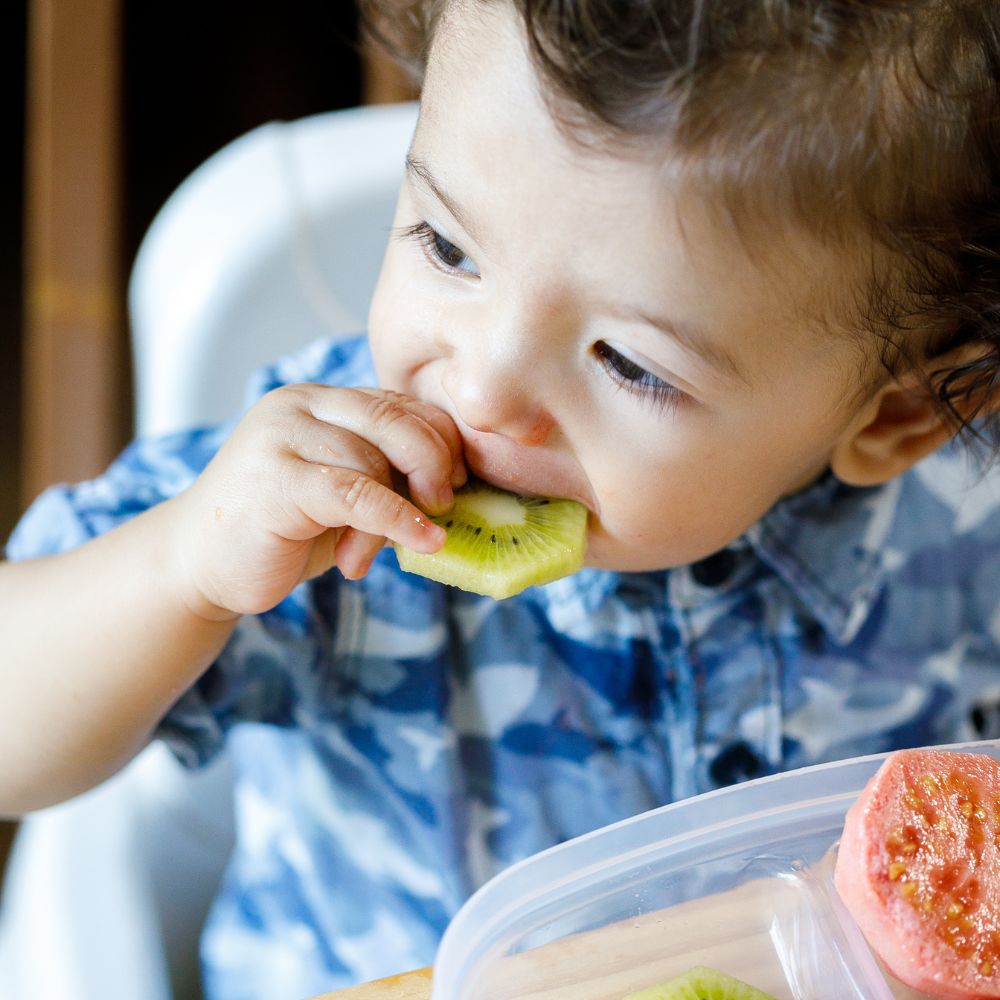
Kiwis are pretty easy to digest and can be a great addition to your baby’s diet. Kiwis are high in fiber, which can help support healthy digestion and bowel movements, as well as help regulate blood sugar levels.
However, some high-fiber foods can produce gas and cause discomfort for babies.
To minimize this, introduce kiwis gradually and in moderation in your baby’s diet. If you have concerns about your baby’s digestion, it’s always best to consult your pediatrician.
Kiwi recipes for BLW
BLW Kiwi Pancakes
Ingredients:
- 1 ripe kiwi, peeled and mashed
- 1 egg
- 1/4 cup of whole wheat flour
Instructions:
- In a mixing bowl, whisk the egg until fluffy.
- Add the mashed kiwi and mix well.
- Add the flour and mix until you have a smooth batter.
- Heat a non-stick pan over medium heat.
- Pour a spoonful of the batter into the pan and cook until bubbles form on the surface, then flip and cook for another minute or two.
- Serve warm and enjoy!
Pear and Kiwi Puree
Ingredients:
- 1 ripe pear, peeled and chopped
- 1 ripe kiwi, peeled and chopped
Instructions:
- Steam or boil the chopped pear until it’s tender.
- Puree the pear in a blender or food processor.
- Add the chopped kiwi to the blender and blend until smooth.
- Serve and enjoy!
Kiwi and Yogurt oatmeal
Ingredients:
- 1/2 cup of oats
- 1 cup of water
- 1 ripe kiwi, peeled and chopped
- 1/4 cup of plain yogurt
Instructions:
- Combine the oats and water in a small saucepan.
- Bring to a boil and then reduce the heat to a simmer.
- Cook for 5-7 minutes, stirring occasionally until the oatmeal is thick and creamy.
- Remove from the heat and stir in the chopped kiwi and yogurt.
- Serve warm and enjoy!
How to store kiwis
Whole
If you have unripe kiwis, allow them to ripen at room temperature. Once ripe, they can be stored in the refrigerator for up to one week. To hasten the ripening process, place the kiwis in a paper bag with an apple or banana, which generates ethylene gas and helps the kiwis mature more quickly.
Peeled
If you have already peeled the kiwi, it is recommended to consume it immediately or refrigerate it for up to one day. Peeled kiwis tend to expire rapidly, so store them in the refrigerator to maintain their freshness.
Cut
If the kiwi has been cut, it is recommended to consume it immediately or store it in an airtight container in the refrigerator for up to one day. This prevents the kiwi from rotting and maintains its freshness.
If you need to keep cut kiwis for an extended amount of time, you can freeze them by cutting them into little pieces and placing them in a freezer bag. The shelf life of frozen kiwi chunks is up to six months.
Are organic kiwis worth it?
Yes, buying organic kiwis can be worth it, especially if you are concerned about the potential pesticide exposure from conventionally grown kiwis. Kiwis are number 38 on the Environmental Working Group’s “Dirty Dozen” list, which means that conventionally grown kiwis are among the products most likely to have pesticide residue.
Choosing organic kiwis can reduce your exposure to these pesticides and support more sustainable farming practices. However, it’s important to keep in mind that buying organic can be more expensive, so it may not be a feasible option for everyone.
Can babies eat kiwi skin?
Yes, babies can eat kiwi skin. The skin of a kiwi is edible and contains a lot of fiber, vitamins, and antioxidants.
However, some babies may find the texture of the skin too tough to chew and swallow, so it’s important to take your baby’s preferences and age into consideration.
If you want to serve kiwi with the skin on, make sure to thoroughly wash the fruit to remove any dirt or pesticides.
Conclusion
In conclusion, introducing kiwi to your baby during baby-led weaning can be a great way to provide them with essential nutrients and a delicious taste.
Remember to serve ripe, soft kiwi and to cut it appropriately to reduce choking hazards. Kiwis can be used in various recipes, including pancakes, purees, and oatmeal.
Whether you’re trying out a new recipe or simply serving sliced kiwi as a snack, be sure to follow proper storage and preparation techniques to ensure that your baby is getting the best possible experience.
Keep exploring new foods and enjoy this exciting time of introducing your little one to the world of solid foods!
We’re Maria and Alberto, a married couple and educators who are nutrition enthusiasts. Even before we had kids, we were already crazy about nutrition.
We’d read scientific articles, watch videos from nutritionists, and spend hours listening to nutrition podcasts.
Today, we continue doing this, but in a different way, as we’ve learned to sift through the noise and trends. Nutrition, like any other field of knowledge, the more you read and learn, the more you develop a comprehensive understanding of reality, and that’s what has happened to us.
Before having our first child, we focused on learning everything we could about child nutrition, using the same techniques we had already employed, backed by our extensive knowledge in nutrition.
Our mission is to help other parents with their children’s nutrition, to help them become the best versions of themselves.
If we are what we eat and drink, which is absolutely true, let’s do it right!


